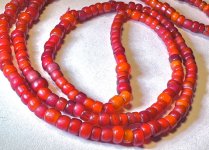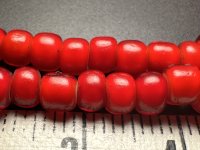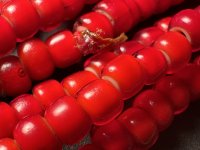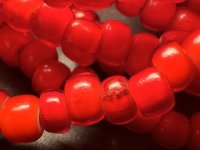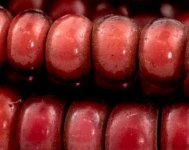Learning4Life
Greenie
- Sep 27, 2024
- 11
- 18
Does the pitting on these Red Whiteheart beads indicate anything about age or history? These beads are about 3mm. I can't find any resources with specifics about pitting or patina on glass beads of any origin. Can I use pitting to be certain about any characteristics of these beads? For example, is pitting a distinctive quality of unearthed beads, ancient beads, or both?

Upvote
2



